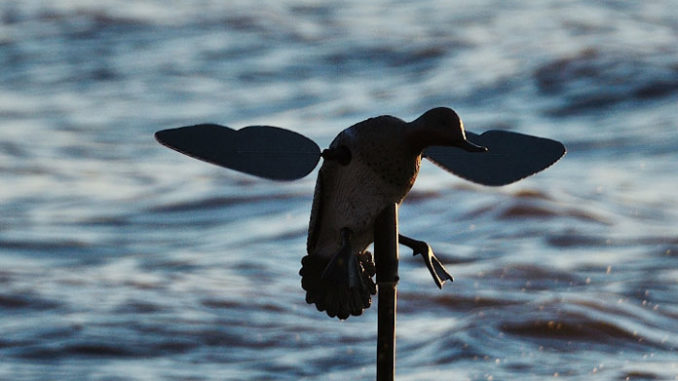
The right movement is key
Hunters using clever decoy spreads can increase their odds of taking home more feathered fowl by incorporating Isaac Newton’s Laws of Motion to make their hunting spot more attractive.
Most game and bird species are drawn to places where there are other individuals, and ducks are no exception. They seek out other members of their tribe that appear to have already found the mother lode of chow. This is especially true during the winter migration, when the locating food is critical for survival.
Cold weather and a long journeys from their summering grounds takes a toll on ducks. They must find food quickly and eat lots of it to survive. When ducks are flying over potential feeding grounds, they are looking eagerly for any signs of other ducks already enjoying the buffet. This is the primary reason decoys are so effective at drawing ducks into shooting range, but a hunter’s decoy spread must be very visible to catch the eye of flights of high-flying ducks.
Ducks have keen eyesight, but you can use that to your advantage
If ducks would have a super power, it would be their eyesight. They can see three times as far as humans. They have one of the most-developed retinas in the animal kingdom. Their high concentration of blood vessels empower them to detect movement on the super-powered level.
For hunters, this super sensitivity to movement is a double-edged sword. Hunters must be extremely still and well hidden to conceal themselves from approaching ducks. Yet, their super keen eyesight can draw ducks in from afar. Hunters should incorporate motion into their decoy spreads to improve their odds of catching the eye of a passing flock.
Motion can be in the form of pull cords, vibrators, mini-kites, wind socks or spinning-wing decoys. Any of these types of motion will increase the odds of alerting a flock of ducks. The most-effective is the spinning-wing decoy, which imitates ducks landing and can be recognized from very long distances by the naked eye.
Adding motion to any decoy spread will increase the chances of getting a flock of ducks to commit and drop their feet at any time of the hunting season.




Be the first to comment